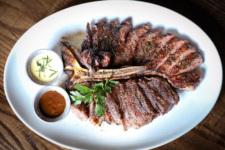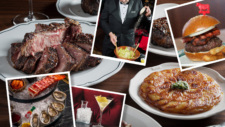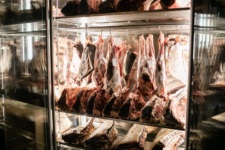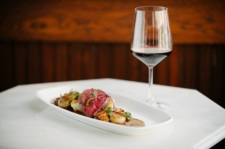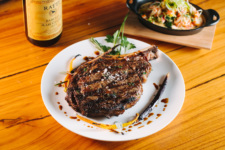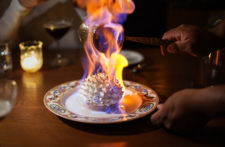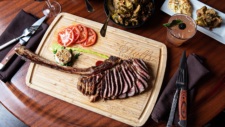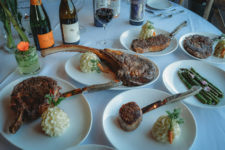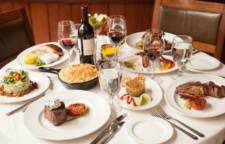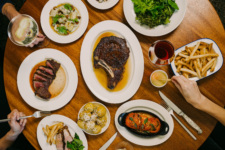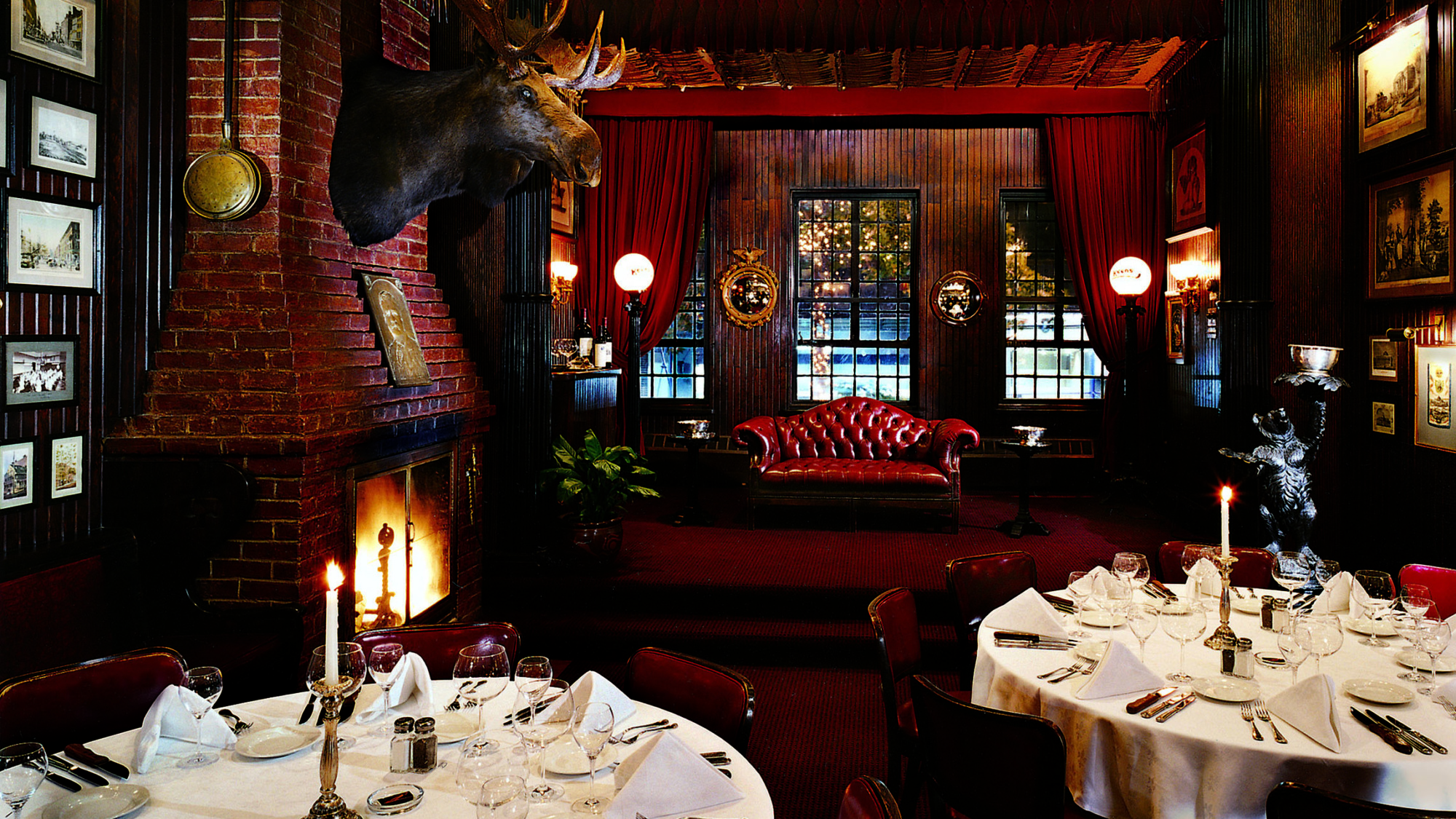
Even 135 Years After Opening, There’s No Dining Room Quite Like Keens
The Martini was perfect — cold, strong, and large. The shrimp cocktail was textbook, the shrimp big and firm, the cocktail sauce tangy. The creamed spinach struck just the right correspondence between vegetable and dairy decadence. The iceberg wedge salad was big enough for two and didn’t scrimp on the blue cheese or bacon. And the famous mutton chop was flawless, an enormous saddle of meat cooked to golden perfection and served with genuine house-made mint jelly. It was as good a meal as I’d had at Keens Steakhouse.
But something was missing — the historic steakhouse itself. The meal described above was enjoyed during COVID times, when Keens, like many other New York eating institutions, tried its hand at the novel idea of sidewalk seating. A short row of tables were lined up in front of the odd, low-slung, 135-year-old building on West 36th Street.
Lord knows, I was thankful to take in one of my favorite restaurants in the world in any form. Still, I longed for that sensation of traveling to another time, and another New York, that one gets upon entering the dark-wood, amber-lit, multi-room labyrinth that is Keens. I wanted to gaze on the collection of clay pipes once smoked by bygone luminaries from the turn of the last century such as theatrical impresario David Belasco, architect Stanford White, gambler and all-around high-liver Diamond Jim Brady and journalist O.O. McIntyre.
I wanted to imagine a different Herald Square, one that was in the late 19th century the center of the New York theater world, an area of excitement and panache of which Keens was the preferred watering hole and chop house (as the establishment was first called, before chops took a back seat to steaks in American hearts) and of which sporting ground Keens is the last survivor. I wanted to stare at the framed photos and posters on the walls that advertised in bold type and black and white the good times and celebratory bashes of the distant past. I wanted to stroll through the separate entrance leading to the bar and gaze upon the languid, unashamed beauty of Miss Keens, whose oil likeness hangs above the bar. One of my proudest moments was the night I correctly answered all the trivia questions posted daily at the end of the bar and won a free drink.
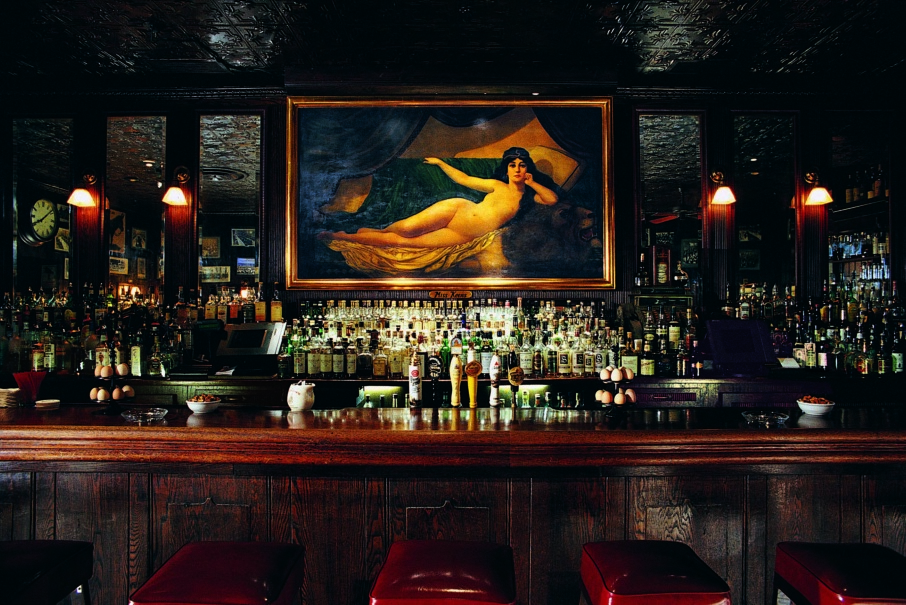
Above all, I wanted to experience the frisson of sheer excitement of being inside Keens. It is as romantic and evocative a dining space as there is in New York, and one that has miraculously held the past and present in perfect balance for decades. For Keens, while as perfect as any old-school restaurant stage set Hollywood could dream up, is no museum piece. The food, the drinks, the staff and, most importantly, the clientele are vital and alive.
It is not difficult, with oyster and Champagne in hand, to imagine what Keens must have been in 1900, when actors, journalists and theatergoers flitted in and out of the doors between shows; a place that throbbed with theatricality, pomp, joie de vivre and just plain good-old fun. That’s because it still feels that way today. Everyone in Keens looks happy to be there. And why not? At Keens, any ordinary Joe or Jo can be king or queen for a meal. The fare isn’t cheap; the chop itself is $62. But, unlike many high-ticket restaurants, it pays off not only as a great meal, but a grand experience. Every single time.
So, sidewalk-seating Keens, you are an anomaly and I’m glad I experienced you. I’m also glad to have supported an institution I cherish during a time of need. But I go to Keens to briefly escape gritty, ragtag 36th Street. I look forward to being piped aboard again soon.
Robert Simonson writes about cocktails, spirits and bars for The New York Times. He is the author of four books on cocktails, most recently “The Martini Cocktail,” which was nominated for a James Beard Award. Follow him on Instagram at @RobertOSimonson
Discover More

Stephen Satterfield's Corner Table


